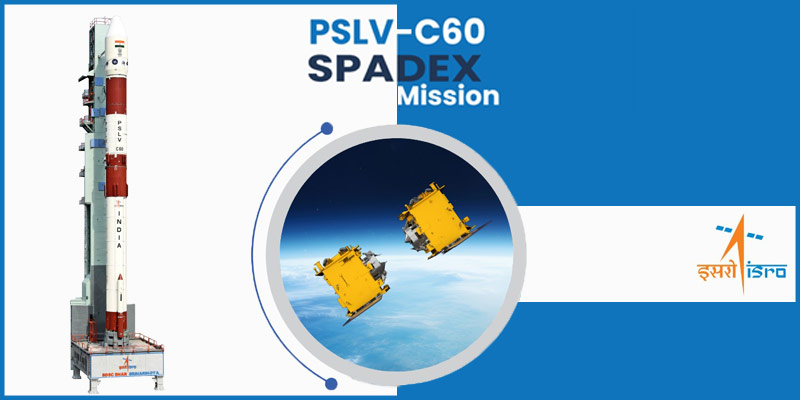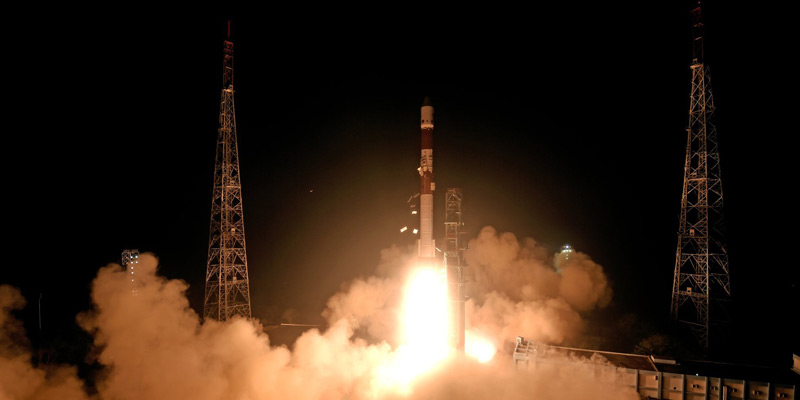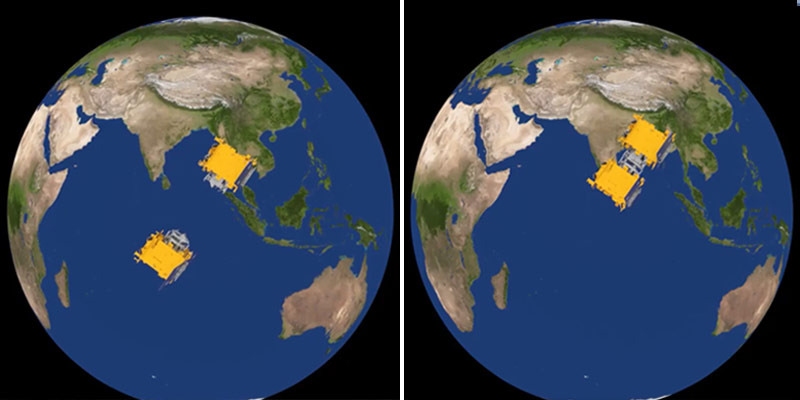- India
- Dec 31
ISRO launches PSLV-C60 for Space Docking Experiment (SpaDex)
• The Indian Space Research Organisation’s (ISRO) Space Docking Experiment (SpaDex) onboard a PSLV rocket was successfully launched from the Satish Dhawan Space Centre in Sriharikota on December 30.
• The PSLV-C60 mission has successfully placed the twin spacecraft that would aid in demonstrating space docking.
• After the culmination of the 25-hour countdown which commenced on December 29, the rocket lifted off at 10pm from the First Launch Pad at Sriharikota.
• The 44.5-metre tall PSLV-C60 rocket placed the two spacecraft — Spacecraft A (SDX01) and Spacecraft B (SDX02), each weighing 220 kg — in the right orbit of 475 km circular orbit.
• Spacecraft A (SDX01) or the ‘Chaser’ and Spacecraft B (SDX02) or the ‘Target’ would be merged together later at an altitude of about 470 km after travelling at the same speed and distance.
• The docking process can happen in another week and the nominal time is going to be approximately January 7, ISRO chief S. Somanath said.
• In this mission, the very important part is the POEM-4 with 24 payloads from startups, industries, academia and also from ISRO centres.
Significance of SpaDeX
• The Space Docking Experiment (SpaDeX) is a complex process where two spacecraft connect while orbiting the Earth.
• Docking systems allow two spacecraft to connect in orbit, enabling critical operations like assembling space stations, refuelling, or transferring astronauts and cargo.
• The SpaDeX is a pivotal project by ISRO designed to develop and demonstrate the technology needed for spacecraft rendezvous, docking, and undocking using two small satellites.
• The primary objectives of SpaDeX are to develop and demonstrate the technology for rendezvous and docking using two small spacecraft, and to demonstrate controllability in the docked condition, showing the potential for extending the life of the target spacecraft. Additionally, the mission aims to test power transfer between the docked spacecraft.
• The secondary objectives also include post-docking activities where the spacecraft will perform independent payload operations.
• SpaDeX will serve as a milestone in advancing India’s capabilities in space docking, a critical technology for future space missions including satellite servicing, space station operations, and interplanetary missions.
• By mastering rendezvous and docking technologies, ISRO is set to enhance its operational flexibility and expand its mission horizons
• This technology is essential for some of India’s space ambitions like Indian on the Moon, getting samples from the Moon (Chandrayaan-4 mission), and building and operating the Bharatiya Antariksh Station.
• Through this mission, India is marching towards becoming the fourth country in the world to have space docking technology.
• The others to achieve this technological feat are China, Russia and the US.
History of space docking
• On October 30, 1967, the Soviet Union accomplished the first automatic docking in space. Mastering docking was an essential step in the development of both their lunar landing effort and their space station plans. The two spacecraft, Kosmos 186 and 188, were unmanned variants of the Soyuz manned vehicle. This paved the way for later space exploration efforts, including long-term stays aboard space stations.
• The United States followed this with the Apollo-Soyuz Test Project in 1975, which was the first international docking between NASA and the Soviet space agency, marking a new era of cooperation despite geopolitical tensions.
Manorama Yearbook app is now available on Google Play Store and iOS App Store



